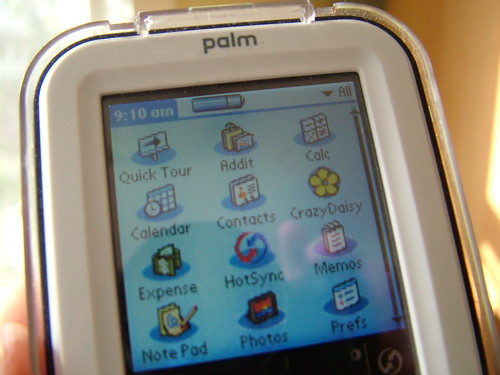 Do you remember the Palm Pilot? Billed as a “PDA” – a personal digital assistant, it was a phone with an address book, could read your writing and translate it into text and it could even do basic emailing if you worked it hard enough. In many ways it was ahead of its time.
Do you remember the Palm Pilot? Billed as a “PDA” – a personal digital assistant, it was a phone with an address book, could read your writing and translate it into text and it could even do basic emailing if you worked it hard enough. In many ways it was ahead of its time.
Since that time I have had all kinds of phones – from functional mobile phones to various BlackBerry devices and iPhones. And each device has been a marked improvement on its predecessor. These devices are not just add-ons to the way we live anymore – they are part and parcel of our lives. And when we leave them behind, lose them or find ourselves out of coverage, it’s as though we have lost a limb. A really useful, vital limb.
But the most amazing thing about these devices is not the technology. It’s the changes in behaviour that have seeped into our lives driven by the technology. Think about it:
When we discover a new place for a weekend away, we …
We don’t just absorb the ambience, take a moment to write a letter or postcard to send to family and friends and open a celebratory bottle of sparkling. We check-in or claim the space on Foursquare and Facebook. We take a photo of the view, capture the latitude and longitude on our GPS and share the image via Instagram. That then gets pushed to Twitter. We make an update via social networks, take another snap of that cold glass of sparkling wine and let our friends know that we wish they were with us. Then we wait for responses – Likes, tips from other friends who have checked-in nearby and suggestions for delicious nearby takeaway. Meanwhile the sun sets (more photos, skyburn this time, you know you love it), another glass is poured and we feel warm knowing that even when we’re on the edge of civilisation that we are still connected. Sometimes, shock horror, the wifi drops out causing a moment of anguish (hashtag #firstworldproblems). But a quick router reset puts the world to right.
The thing is, that we are not only always-connected, it is almost a precondition for pleasure. Our personal compass has become gamified, socialised and part of a connected, data-driven personal empire. It’s like slide night at Aunty Pat’s – just on a grand scale. The question is how far can you go? How close can we get to the edge of a digital network. And if we step beyond, is our authentic experience real if it is not reported?
We race ever faster towards the future, but are we prepared for it? Have we thought our participation through – from an environmental, economic and ethical point of view? Have we considered the energy required to power this lifestyle? And what education do we need and what should be delivered to the coming generations? And what role does entrepreneurship play?
These “Six Es” form the theme of the Creative Innovation 2013 Asia Pacific conference. Held in Melbourne, 27-29 November, it features over 40 global leaders, innovators and thinkers. It’s your chance to join big and small business, entrepreneurs, educators, creative and government leaders,
emerging talent and leading thinkers from around the World, Asia and Australia.
Book any early bird tickets for Ci2013 before 15 September and save up to $615. And be sure to use the code E6 to secure a further 10% discount.

 Ian Lamont via Compfight
Ian Lamont via Compfight



![Reblog this post [with Zemanta]](https://img.zemanta.com/reblog_e.png?x-id=7bb96f35-1fa2-48c5-9566-28107d6f3fed)


